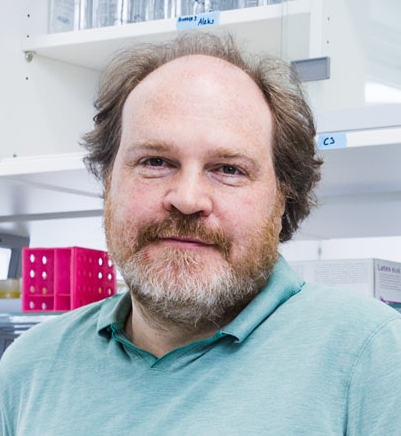
Center for Pathophysiology, Infectiology and Immunology (Institute of Specific Prophylaxis and Tropical Medicine)
Position: Associate Professor
ORCID: 0000-0001-9128-4501
T +43 1 40160-38211
david.leitsch@meduniwien.ac.at
Keywords
Antiparasitic Agents; Drug Resistance
Research group(s)
- Molecular Microbiology
Head: David Leitsch
Research Area: Molecular biology of anaerobic parasites, drug resistance, mode of action of and resistance to metronidazole and other nitro drugs
Members:
Research interests
Drug resistance poses a serious problem in the treatment of many infectious agents, including anaerobic parasites (Trichomonas vaginalis, Giardia lamblia) and anaerobic bacteria (Helicobacter pylori, Clostridium spp., Bacteroides spp.). The main focus of our research lies on the molecular mechanisms causing resistance to metronidazole and other nitroheterocycle drugs which are prescribed against anaerobic infections. The redox system of anaerobic microorganisms seems to have a critical role as a target but also of an enhancer of nitroheterocycle toxicity. We study this dual role in several anaerobic microbes in order to discover a common theme and, eventually, remedies against nitroheterocycle resistance.
Techniques, methods & infrastructure
Molecular biological methods such as cloning, recombinant enzyme expression and biochemical enzyme assays. Two-dimensional gel electrophoresis (2DE), qPCR, western blotting.
Grants
- Antioxidant proteins and metronidazole in Giardia lamblia (2024)
Source of Funding: FWF (Austrian Science Fund), Principal Investigator Projects
Principal Investigator - Factors of metronidazole resistance in Trichomonas vaginalis (2021)
Source of Funding: FWF (Austrian Science Fund), Principal Investigator Projects
Principal Investigator
Selected publications
- Mayr, A.-L. et al. (2024) ‘Comparative proteomic analysis of metronidazole-sensitive and resistant Trichomonas vaginalis suggests a novel mode of metronidazole action and resistance’, International Journal for Parasitology: Drugs and Drug Resistance, 26, p. 100566. Available at: https://doi.org/10.1016/j.ijpddr.2024.100566.
- Leitsch, D., 2017. Drug susceptibility testing in microaerophilic parasites: Cysteine strongly affects the effectivities of metronidazole and auranofin, a novel and promising antimicrobial. International Journal for Parasitology: Drugs and Drug Resistance, 7(3), pp.321–327. Available at: http://dx.doi.org/10.1016/j.ijpddr.2017.09.001.
- Leitsch, D. et al., 2013. Trichomonas vaginalisflavin reductase 1 and its role in metronidazole resistance. Molecular Microbiology, 91(1), pp.198–208. Available at: http://dx.doi.org/10.1111/mmi.12455.
- Leitsch, D. et al., 2009. Trichomonas vaginalis: metronidazole and other nitroimidazole drugs are reduced by the flavin enzyme thioredoxin reductase and disrupt the cellular redox system. Implications for nitroimidazole toxicity and resistance. Molecular Microbiology, 72(2), pp.518–536. Available at: http://dx.doi.org/10.1111/j.1365-2958.2009.06675.x.
- Leitsch, D. et al., 2007. Nitroimidazole Action in Entamoeba histolytica: A Central Role for Thioredoxin Reductase G. E. Ward, ed. PLoS Biology, 5(8), p.e211. Available at: http://dx.doi.org/10.1371/journal.pbio.0050211.